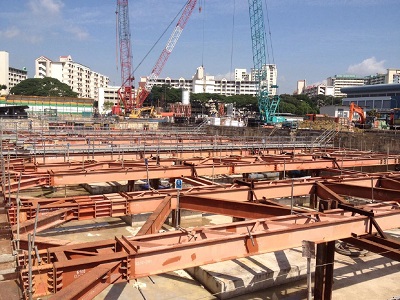
The Philippine construction industry registered a growth of 15.1% in real terms in 2018, with the industry's output value - measured at constant 2017 US dollar exchange rates - increasing from US$38.5 billion in 2017 to US$44.3 billion in 2018; this was preceded by an average annual growth of 9.6% during the preceding four years. Growth during the review period (2014-2018) was driven by positive developments in regional economic conditions and government investment in residential, transport and energy infrastructure.
The government total spending on infrastructure grew by 49.7% in the first eleven months of 2018, compared to the same period in 2017. It increased from PHP486.5 billion (US$9.7 billion) in January-November 2017 to PHP728.1 billion (US$13.8 billion) in January-November 2018. The industry's output value is expected to continue to expand in real terms over the forecast period (2019-2023), driven by the government's plans to upgrade the country's transport infrastructure. In addition, public and private sector investments in residential, commercial and educational infrastructure construction projects are expected to support growth in the industry over the forecast period.
The industry's output value is expected to continue to expand in real terms over the forecast period (2019-2023), driven by the government's plans to upgrade the country's transport infrastructure. The industry's output value in real terms is expected to rise at a compound annual growth rate (CAGR) of 8.60% over the forecast period. The industry is consequently expected to rise from a value of US$44.3 billion in 2018 to US$66.9 billion in 2023, measured at constant 2017 US dollar exchange rates.
The total construction project pipeline in the Philippines including all mega projects with a value above US$25 million - stands at PHP19.1 trillion (US$361.6 billion). The pipeline, which includes all projects from pre-planning to execution, is skewed towards early-stage projects, with 55.0% of the pipeline value being in projects in the pre-planning and planning stages as of April 2019.
Accounting for 33.3% of the industry's total value in 2018, residential construction was the largest market in the Philippine construction industry during the review period. The market is expected to retain its position over the forecast period, and account for 34.7% of the industry's total value in 2023. Infrastructure construction accounted for 21.5% of the industry's total output in 2018, followed by commercial construction with 17.5%, energy and utilities construction with 15.6%, institutional construction with 7.0% and industrial construction with 5.2%.
Key Highlights
Infrastructure construction market output to record a forecast-period CAGR of 8.42% in nominal terms. Under the government’s flagship Build, Build, Build program, the government outlined plans to invest PHP8.1 trillion (US$160.8 billion) in developing infrastructure between 2017 and 2022 to improve mobility across the country. Through the plan, the government aims to increase annual infrastructure spending as a percentage of GDP from 6.3% in 2017 to 7.3% by 2022.
The government aims to generate 35% of the country’s total energy needs through renewable sources by 2030. Accordingly, the government is planning to generate 15.3GW through renewable sources by 2030. Moreover, according to the Department of Energy (DOE), to support economic growth, the government plans to add 20,000MW power generation capacity from renewable sources by 2040.
Under the new six-year National Tourism Development Plan (NTDP), the government plans to invest PHP1.1 trillion (US$23.0 billion) on tourism infrastructure by 2022. The government aims to double the number of foreign tourist arrivals, increase tourism sector revenue by 90% and create 14.4% of the total employment from the tourism sector by 2022.
The total construction project pipeline in the Philippines as tracked by the Construction Intelligence Centre (CIC), including all mega projects with a value above US$25 million, stands at PHP15.8 trillion (US$312.5 billion). The pipeline, which includes all projects from pre-planning to execution, is skewed to early-stage projects, with 56.4% of the pipeline value being in projects in the pre-planning and planning stages as of April 2018.
Highsnobiety Sneakers














